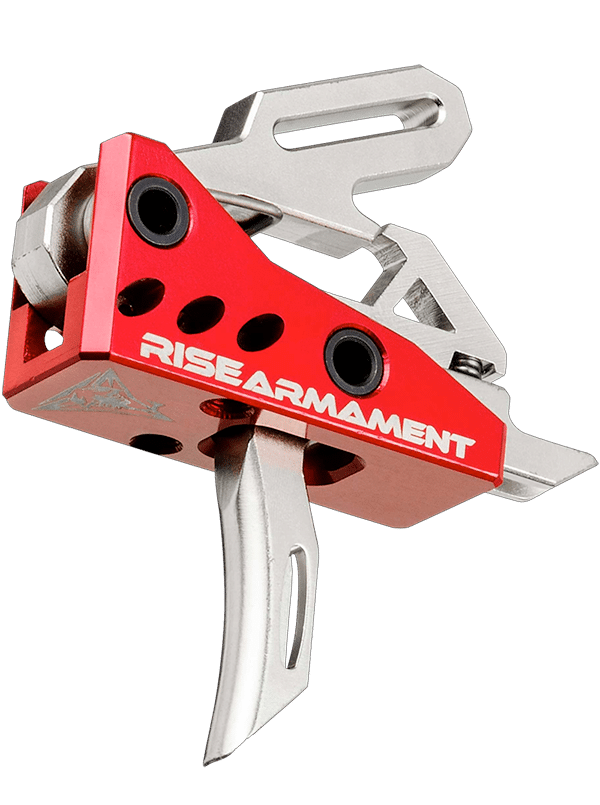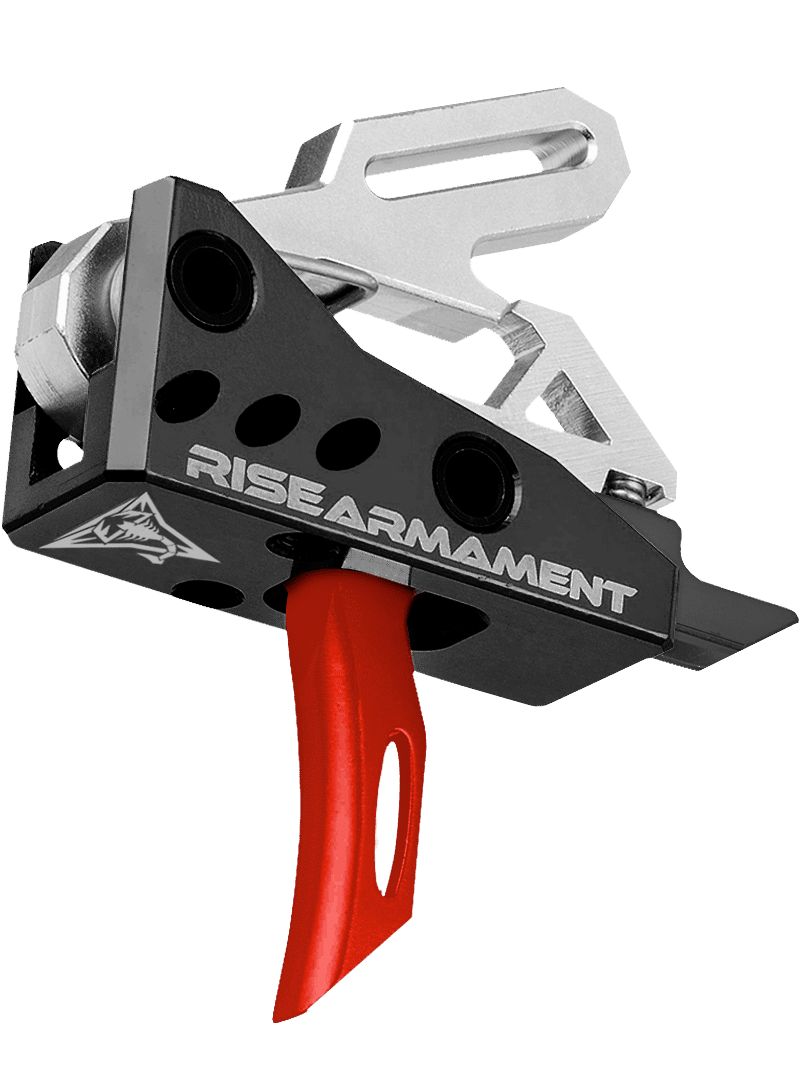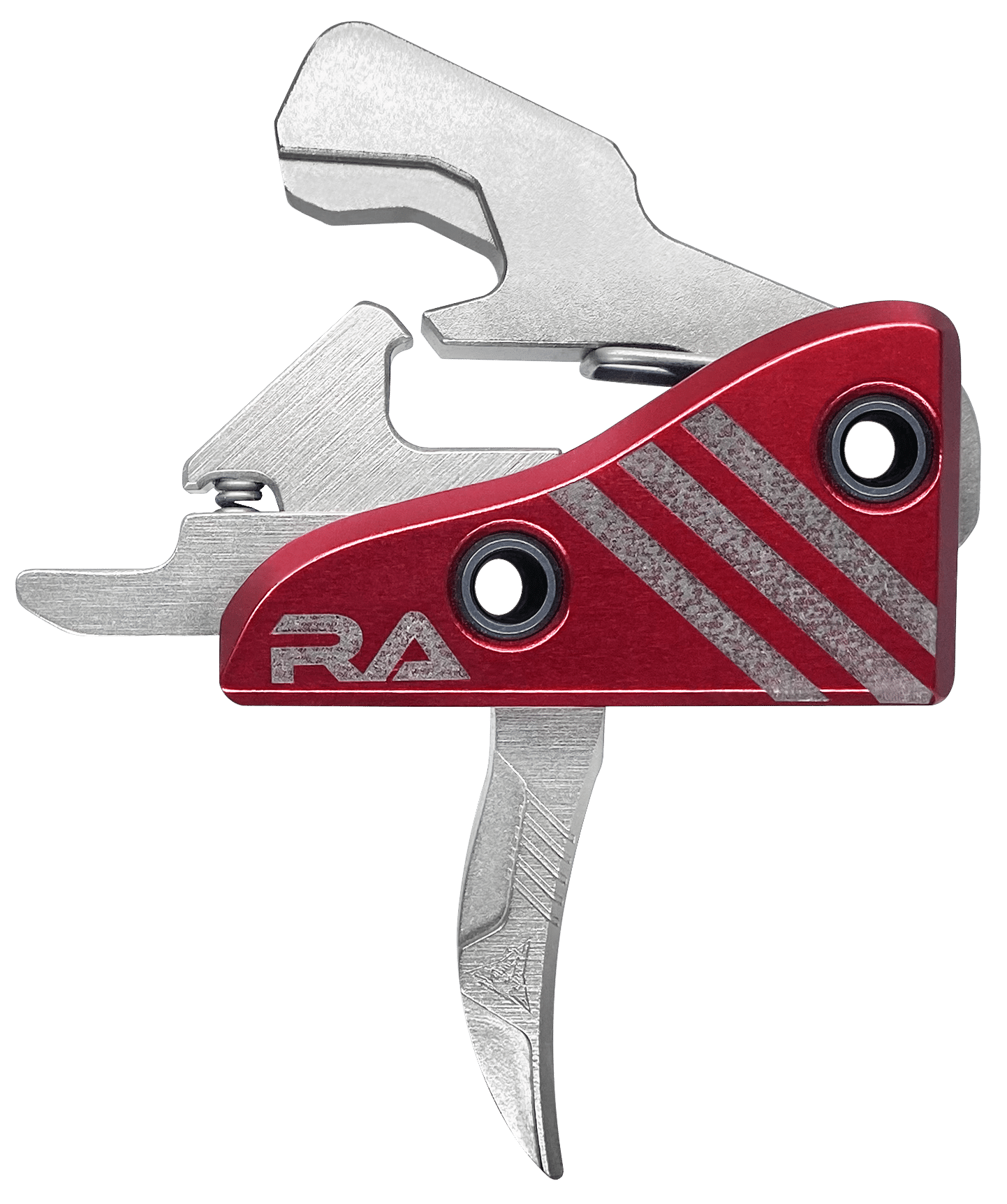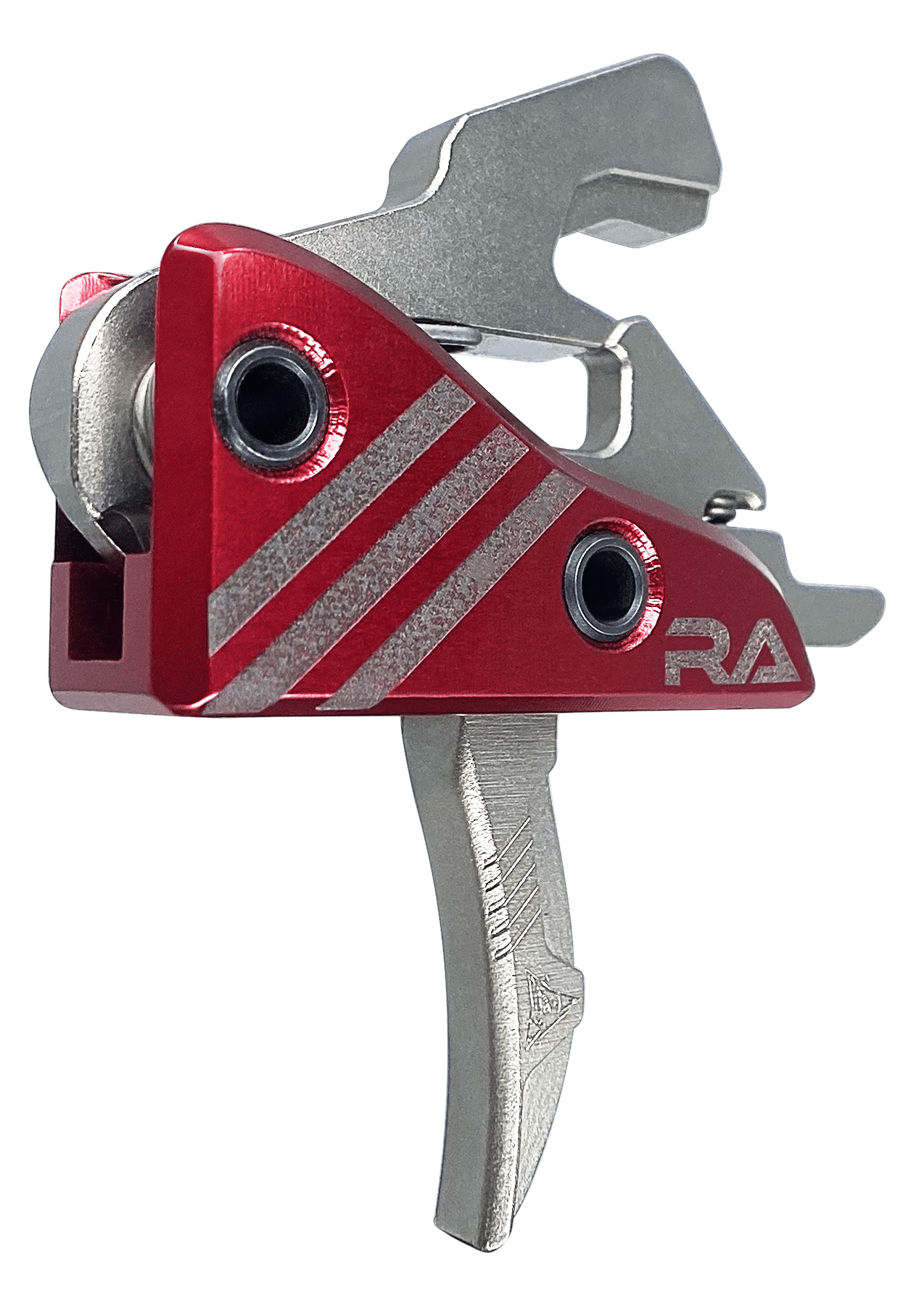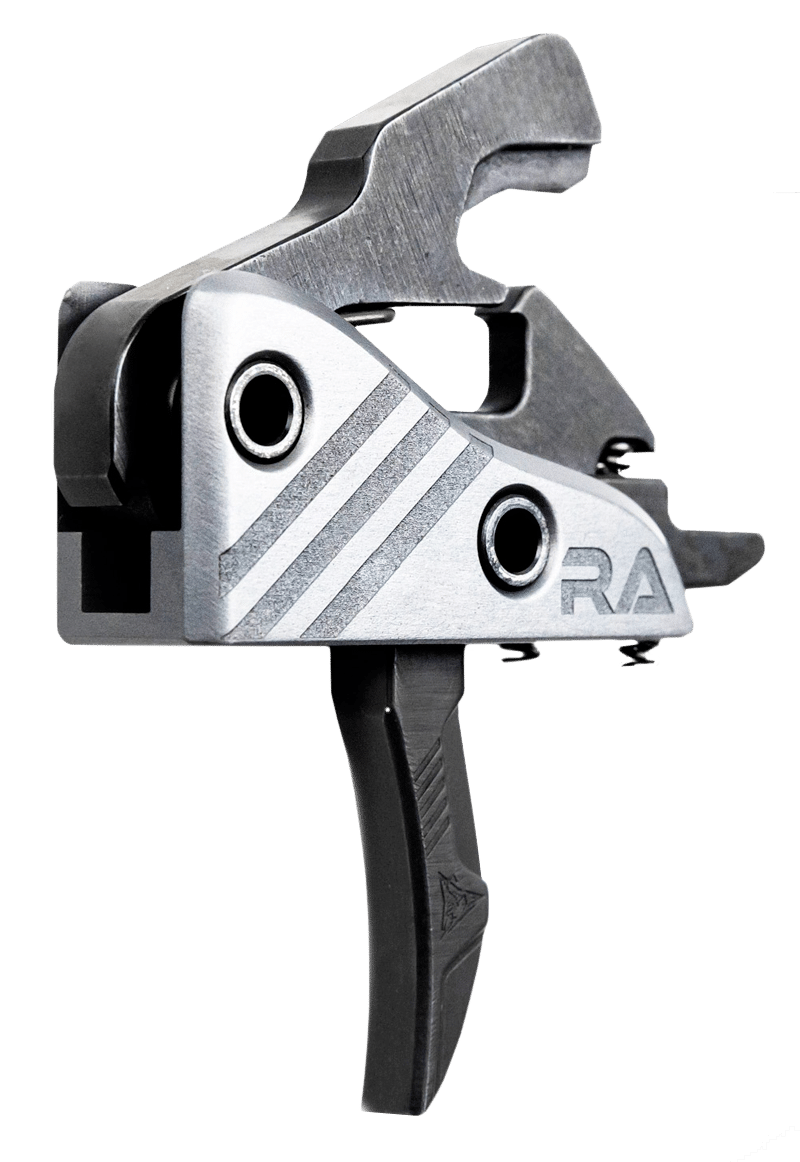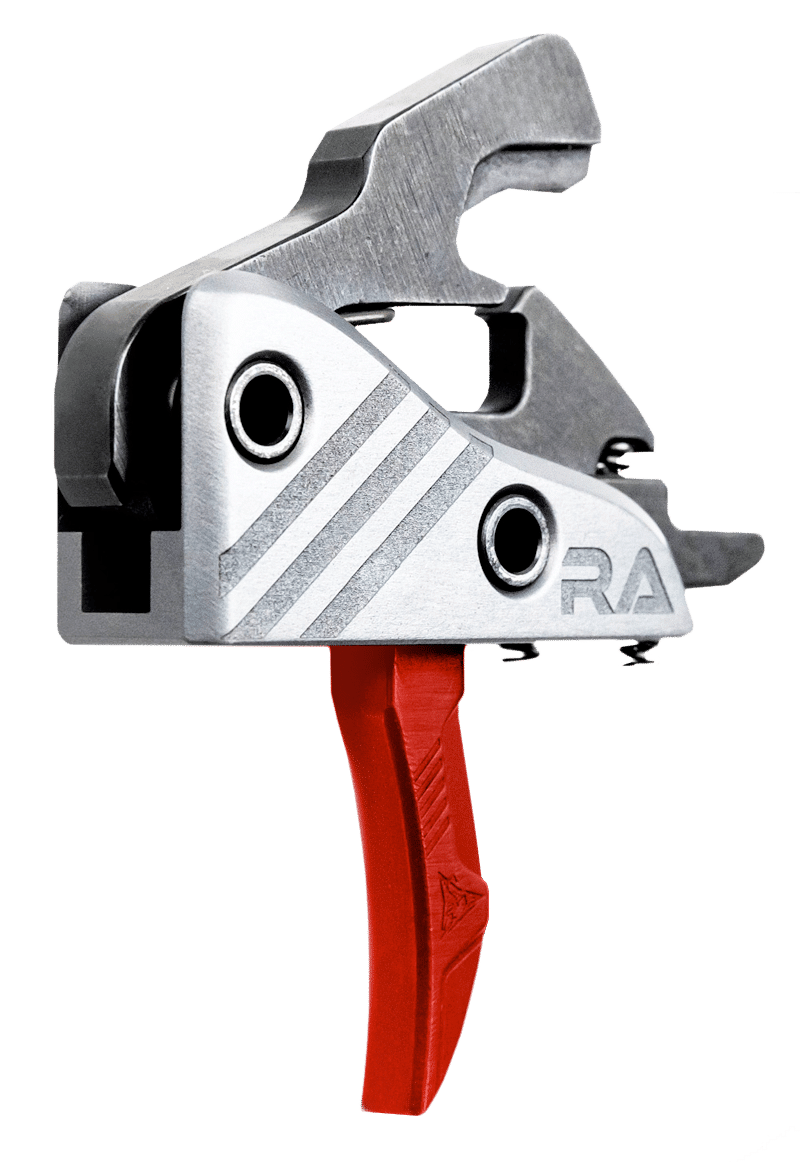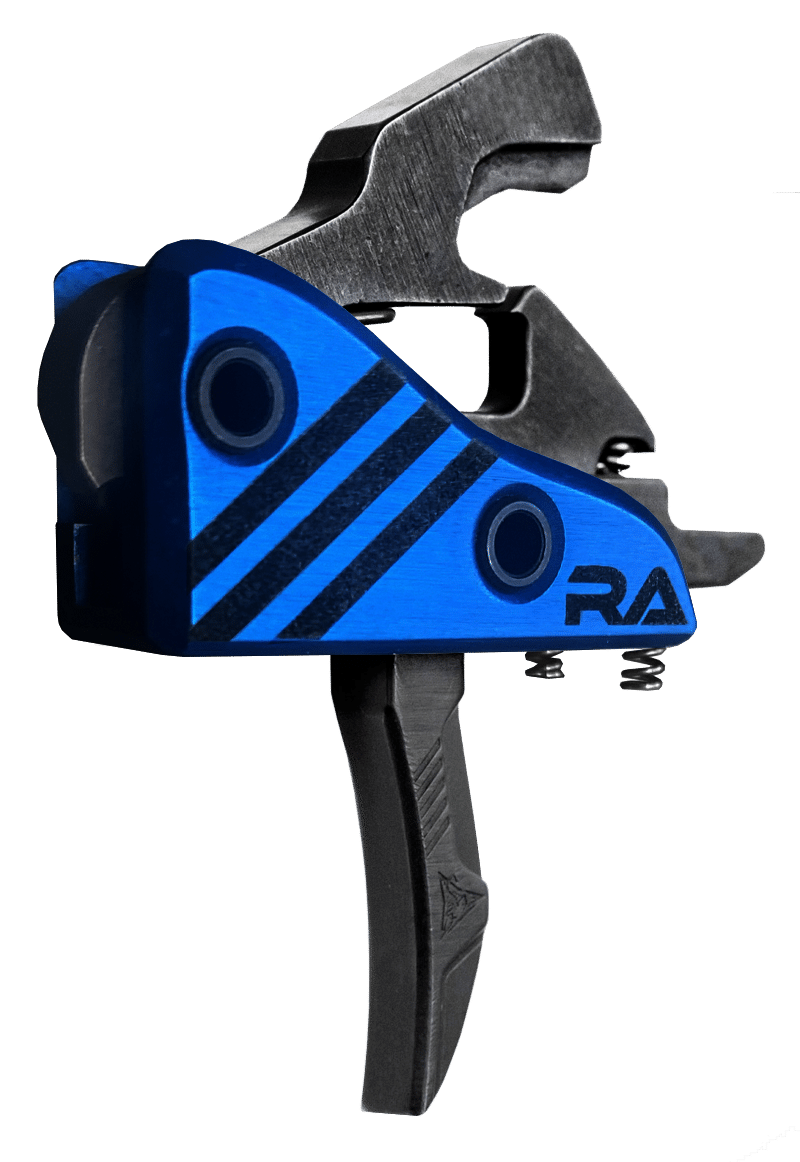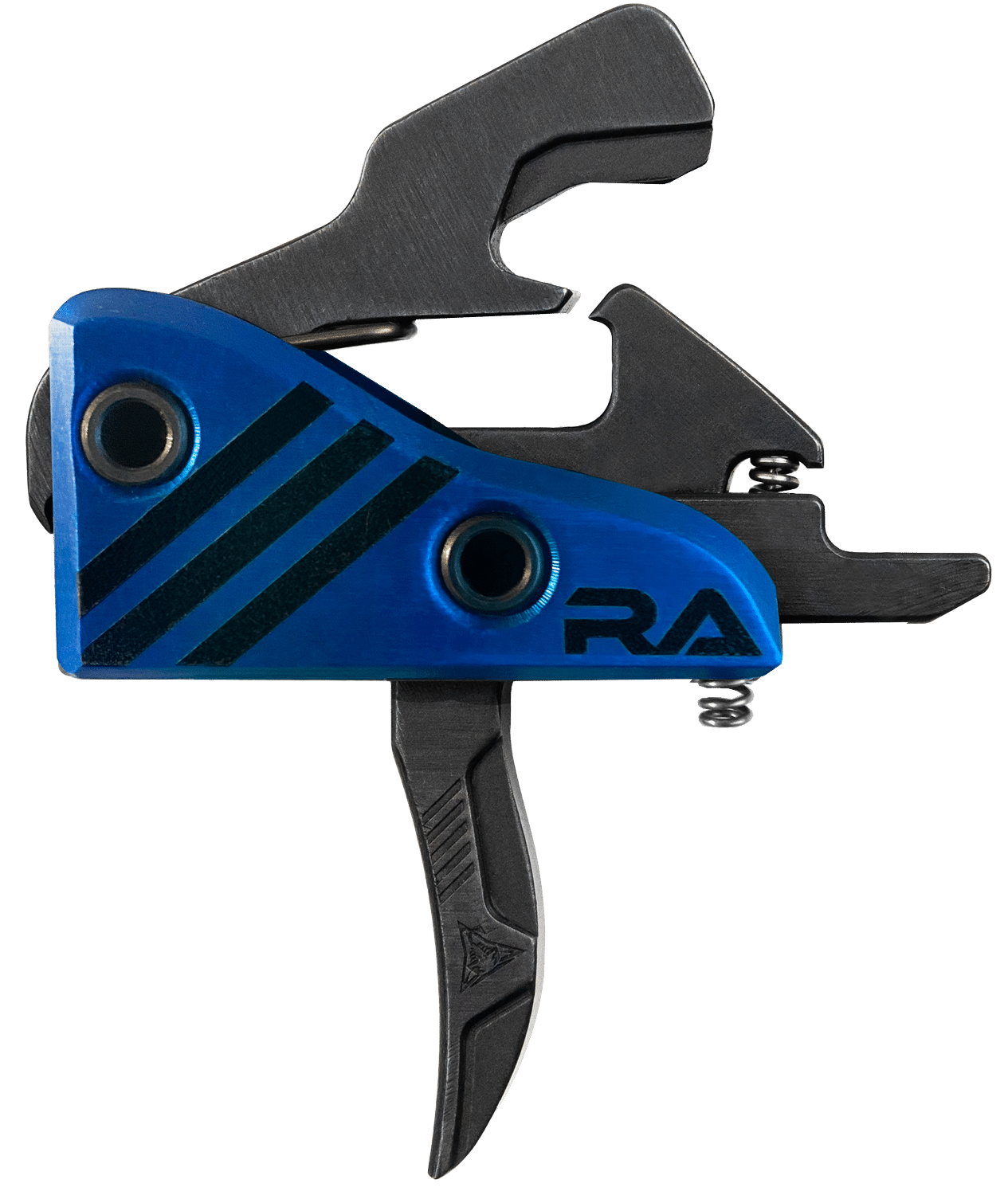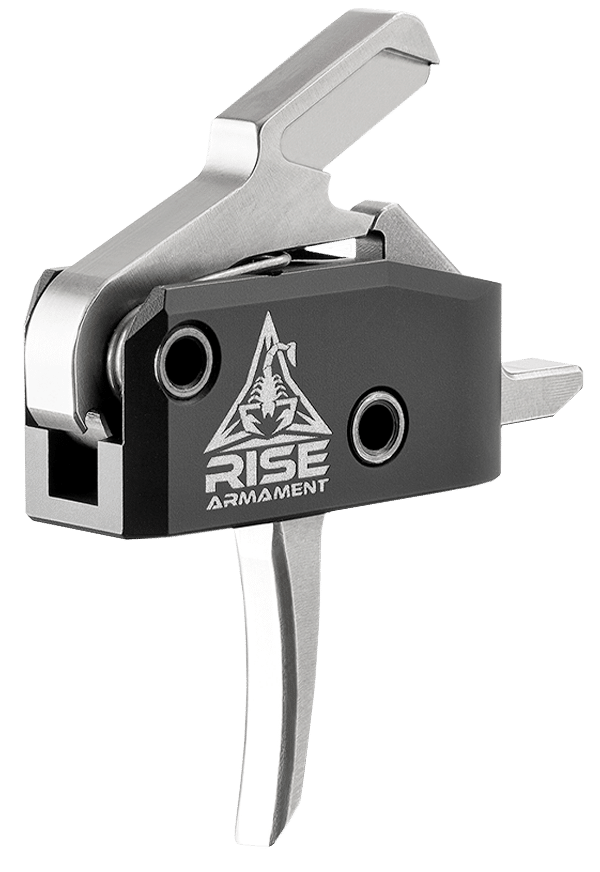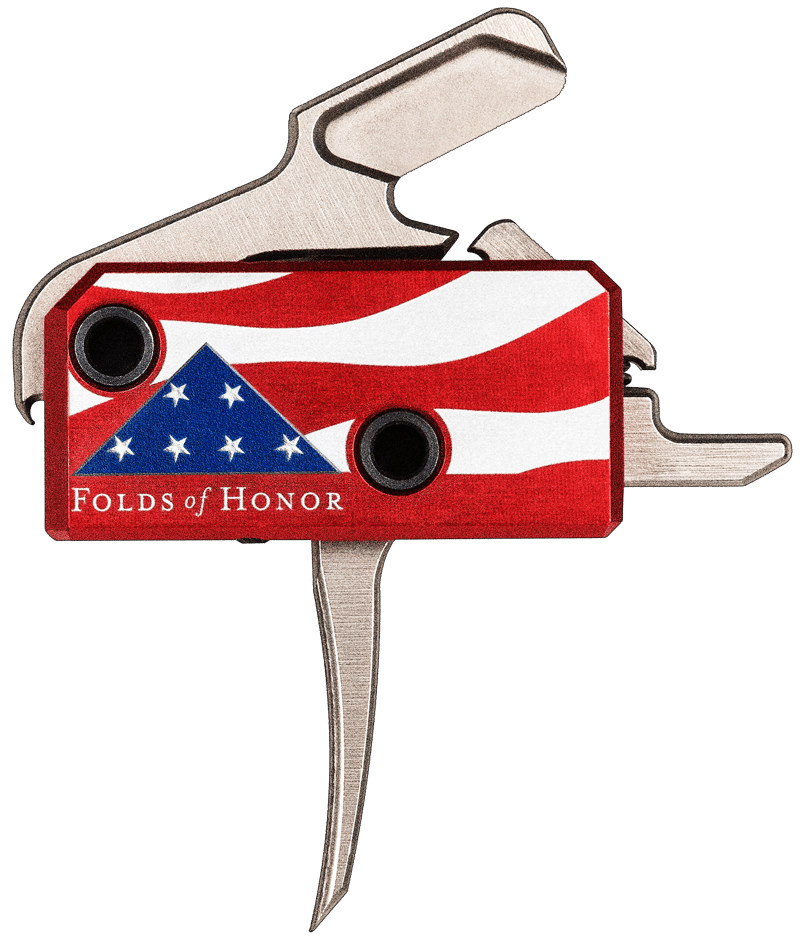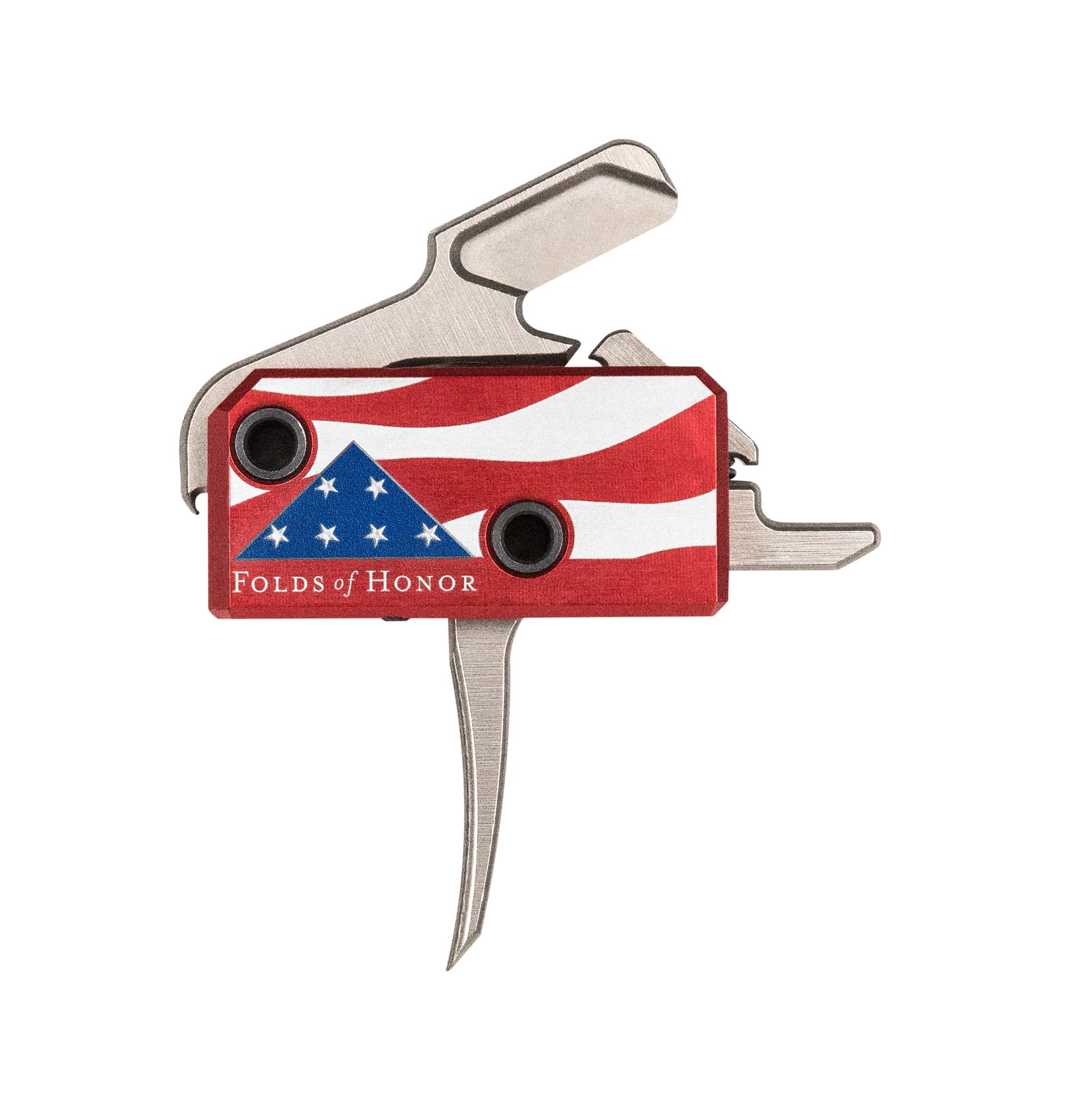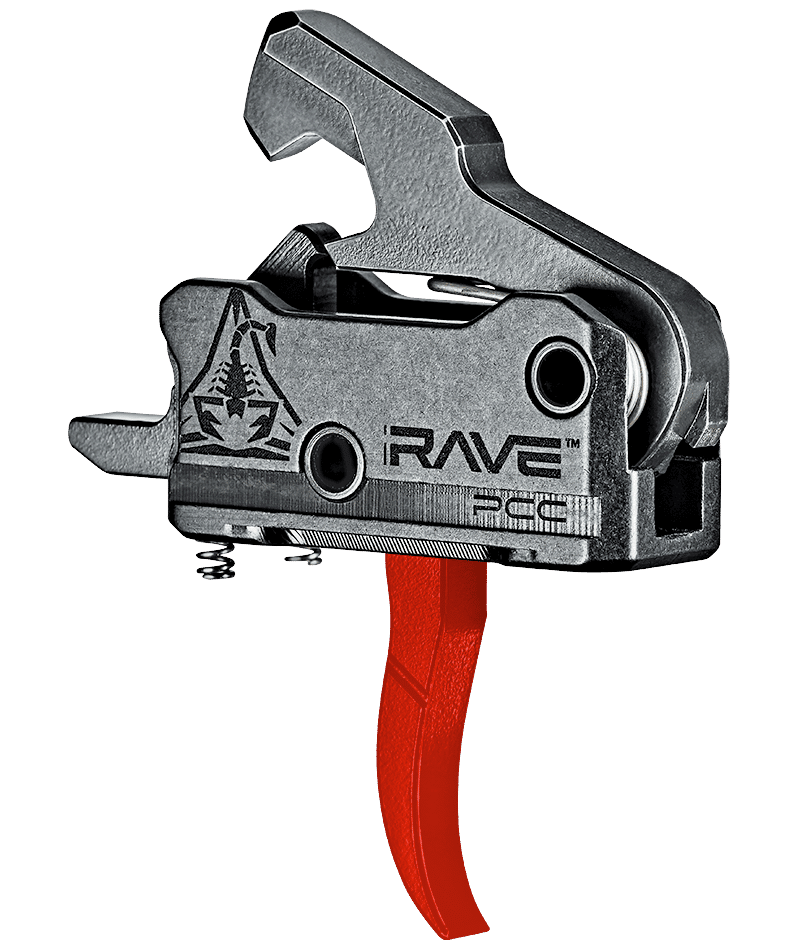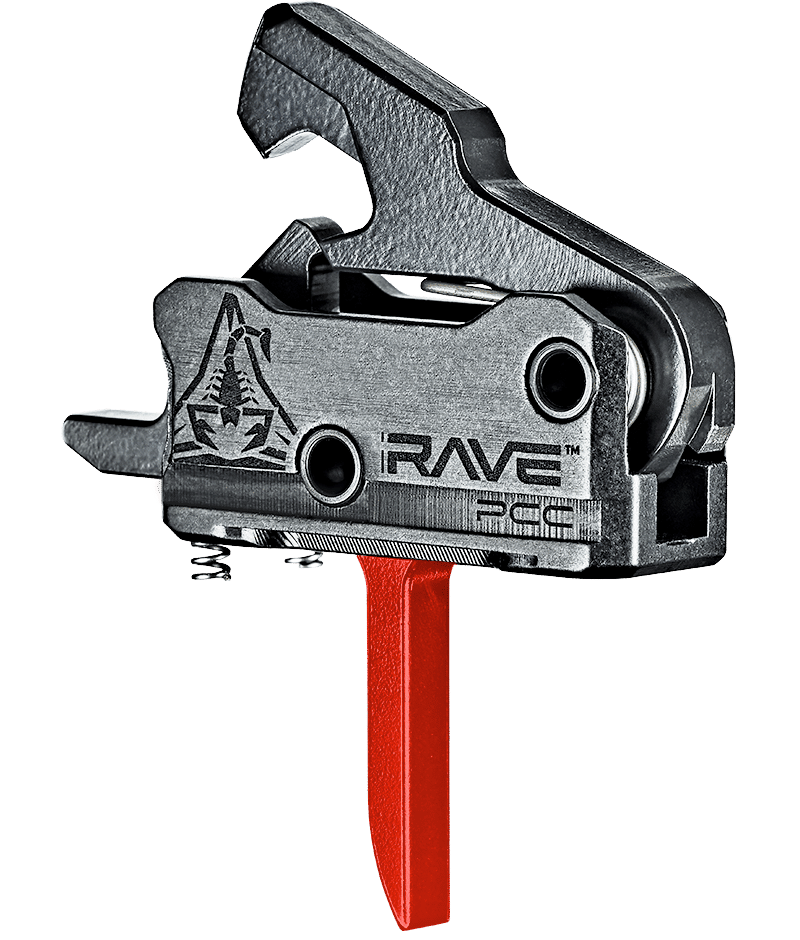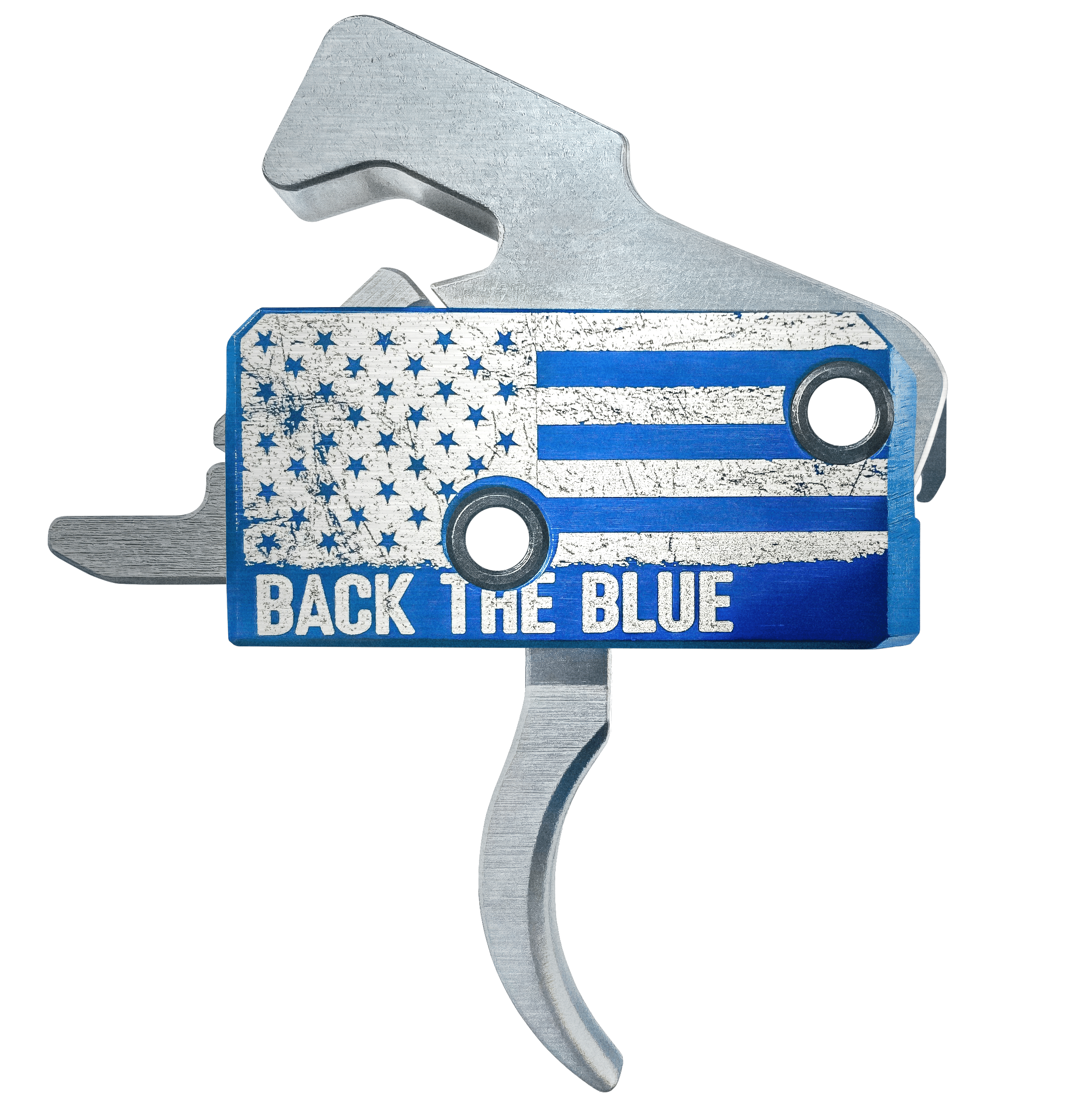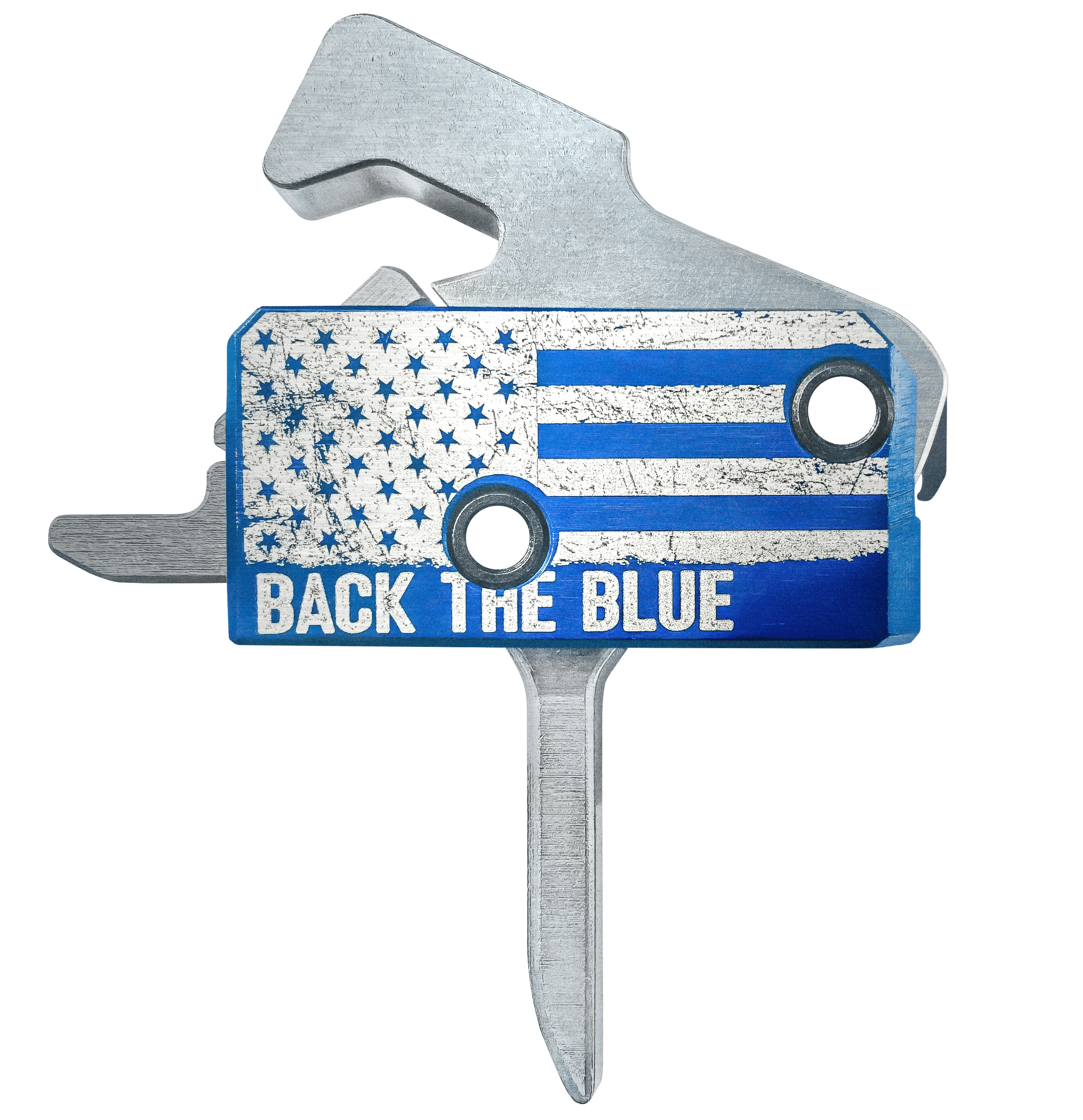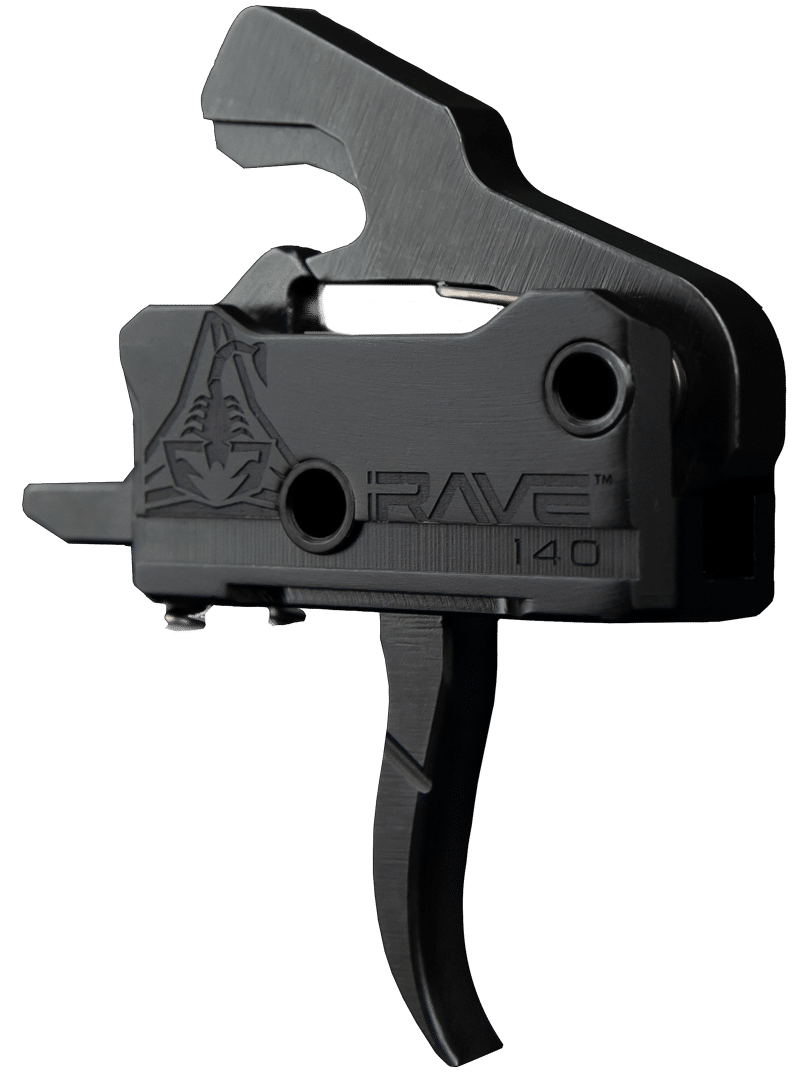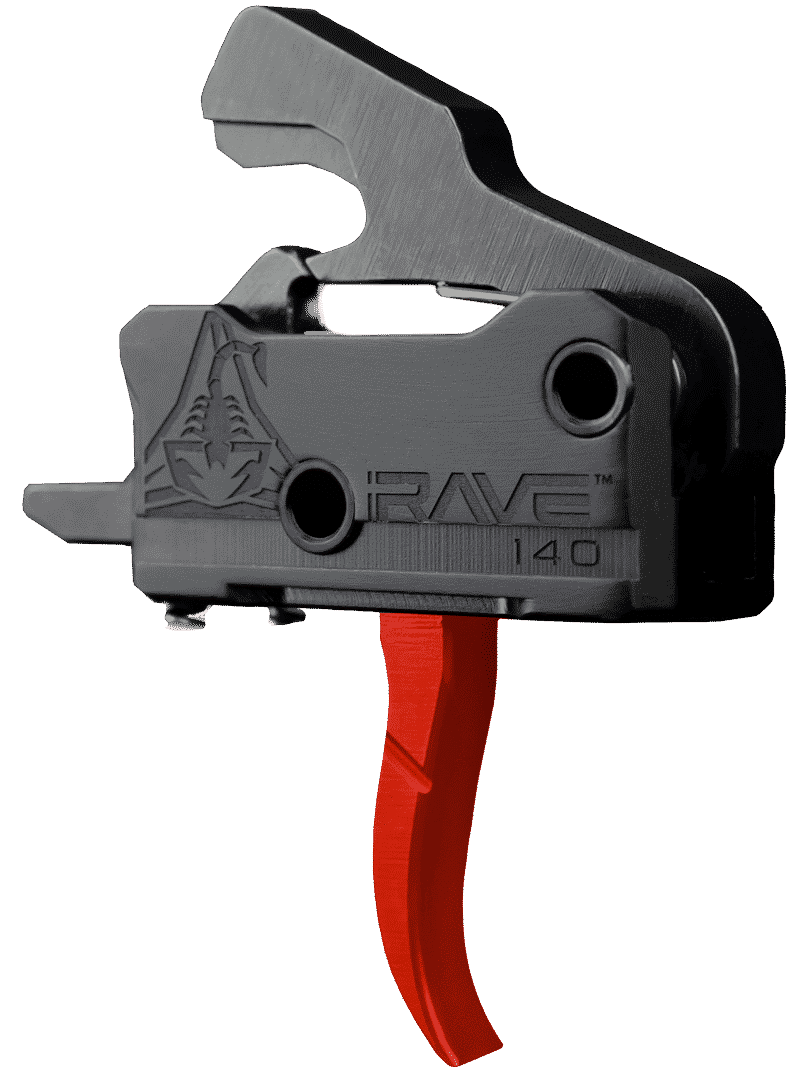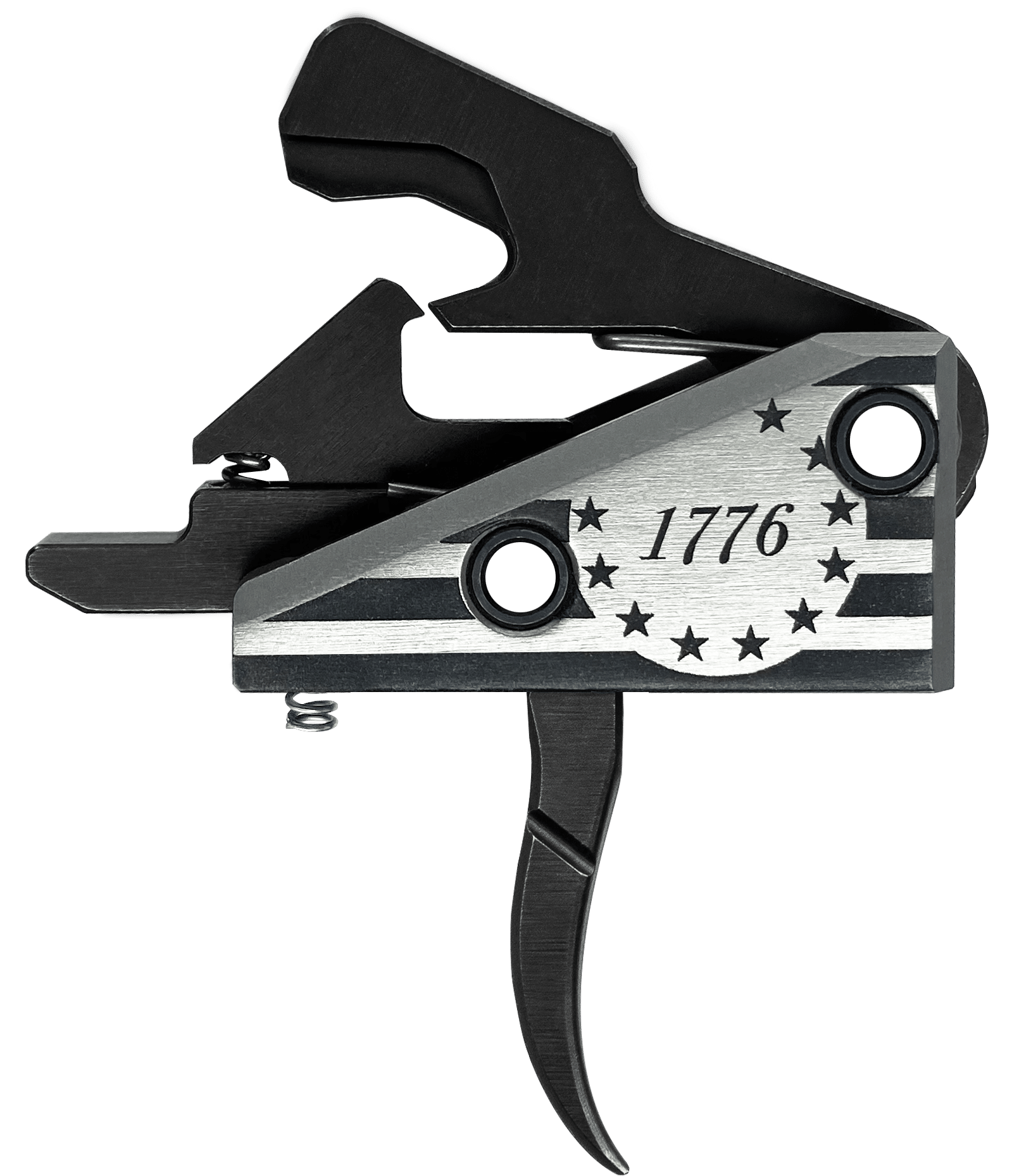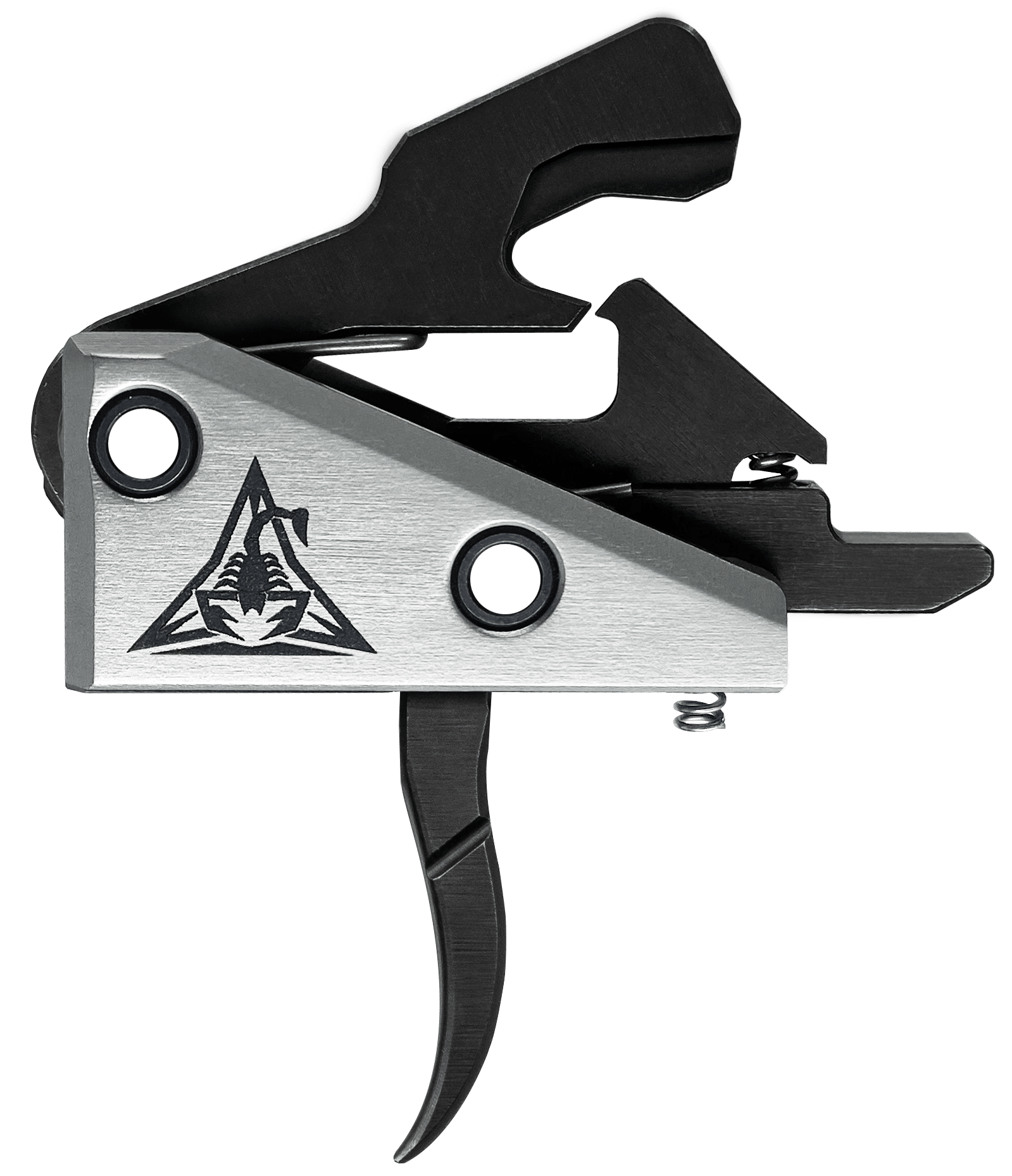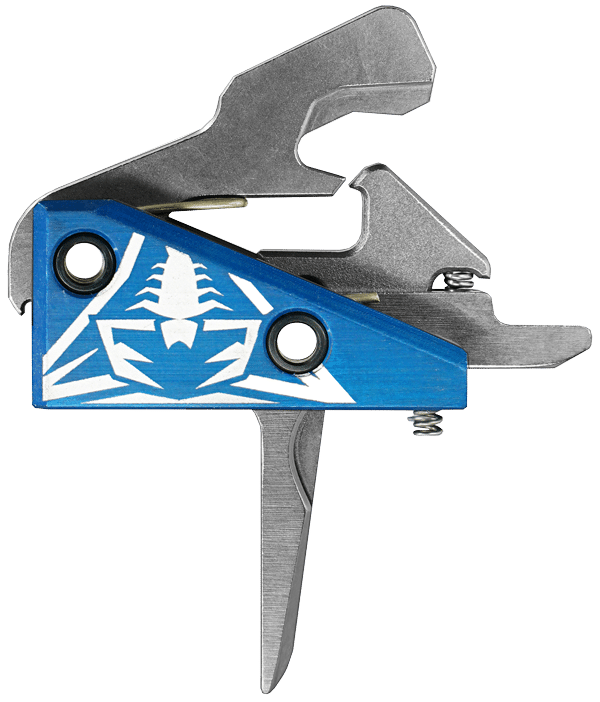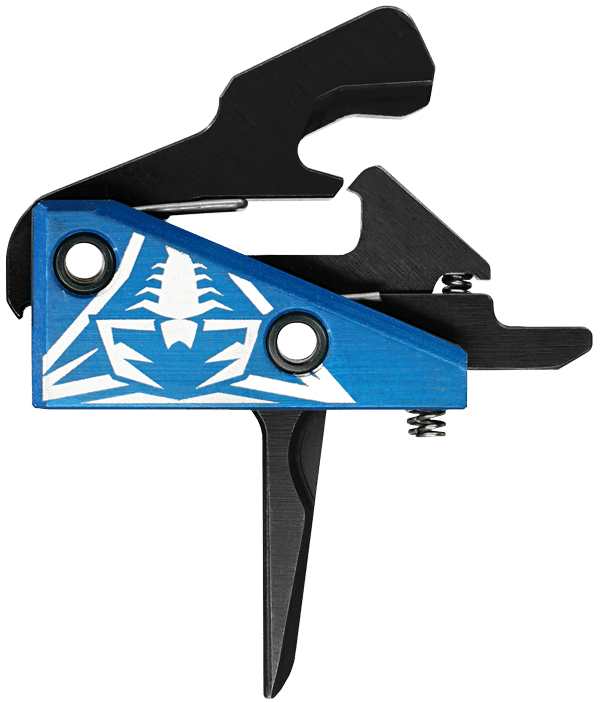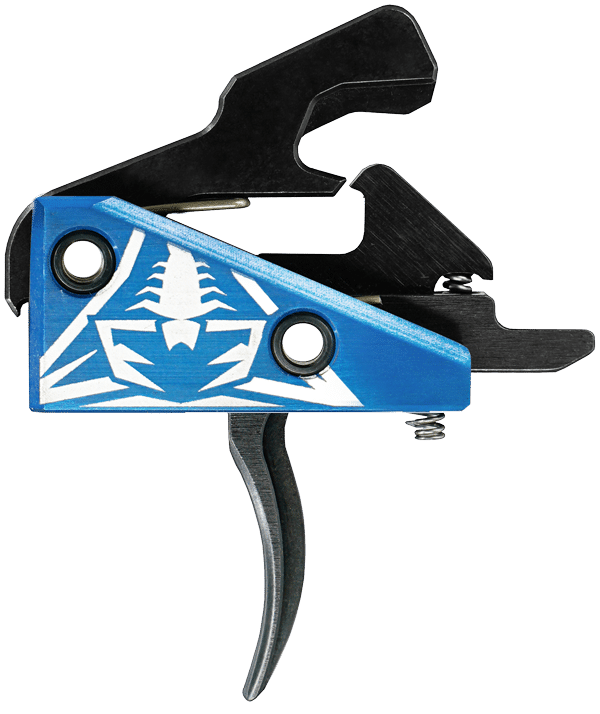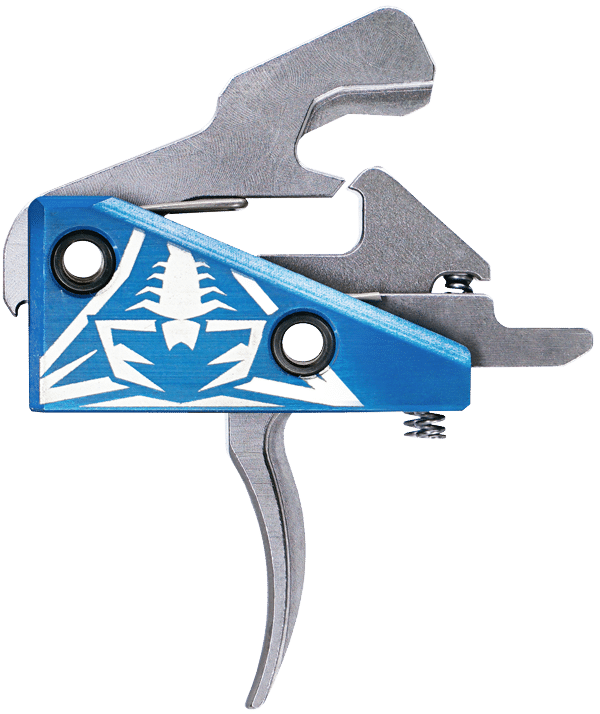What Is an Aftermarket Trigger?
There are many vital components in an AR. Items like bolt-carrier groups, upper receivers, and handguards all play a role. They come together to form one of the most popular firearm platforms in the U.S. But of all the parts and pieces, only one offers a direct interface between the gun and you: The trigger. This unsung hero sitting inside the lower receiver is the start of every fired shot. Every aspect of a shooter’s experience starts with the trigger. As you’ll learn, how the trigger is designed and built can impact everything from how fast an AR can fire to how accurate shooters can be with the platform, whether it’s an AR-15, a large-frame AR-10, or even a 9mm pistol-caliber carbine.
Before we get into the details, let’s look at what we mean when we say “aftermarket trigger.” In the original setup developed by Eugene Stoner, shooters fire AR-pattern rifles with what’s often been called the standard, “mil-spec” trigger. Basically, this is a do-it-all trigger designed with combat use in mind. Most military-issue M16 and M4 variants feature this basic, multi-piece setup; it’s built around a hammer, trigger, disconnector, and their corresponding springs.
However, like most things designed to do it all, the mil-spec AR trigger doesn’t really help shooters excel at any specific role. As the AR platform grew in popularity and shooters adapted the rifle for a variety of roles, it became clear that shooters needed different triggers to optimize the rifle for different roles. Private industry stepped up and offered many different triggers designed to fit the needs of today’s AR owners.
These “aftermarket triggers” offer benefits tailored to the needs of different AR owners. Choices range from self-contained, drop-in units to multi-piece triggers built similarly to the original mil-spec design.
Types of AR-15 Triggers
As you’ll see, there are many different types of AR-15 trigger options. It’s important to understand the differences between them when making a decision.
Mil-Spec Trigger
Here’s where it all started. When Eugene Stoner first designed the AR-15, he incorporated the multi-piece, single-stage trigger design that we’ve all come to know and not love all that much. Those who’ve owned a budget AR or an M4 clone equipped with a mil-spec trigger know that it’s typically gritty, inconsistent, heavy, and altogether unsuited for any one thing in particular. However, let’s not bash it too much. It’s durable, and it works. However, as ARs have become more versatile in commercial and professional worlds, it’s important to have different kinds of triggers better suited to the tasks at hand.
Standard Trigger
At this point, you might be wondering why we’ve broken out “standard” triggers from “mil-spec” triggers. It’s a fair question. The answer is that all mil-spec triggers are standard triggers, but not all standard triggers are mil-spec triggers. These triggers could also be characterized as “non–drop-in” triggers. Why? They provide enhanced features over mil-spec designs, but the overall construction and design are similar to the mil-spec pattern trigger. There’s a separate trigger, hammer, and disconnector, and they’re all held in place by a trigger pin and hammer pin. However, those similarities are largely superficial.
Depending on the design, upgraded standard triggers can have finely finished, polished engagement surfaces or even entirely different engagement surfaces. Many companies have found methods of providing modified trigger pulls by changing how the trigger interacts with the hammer or modifying the resistance offered by the hammer spring.
Drop-In Trigger
Much of the time when AR owners discuss aftermarket triggers, they’re talking about “drop-in” units like the ones offered by RISE Armament. A drop-in trigger includes all the traditional components. The trigger also still acts on the hammer. Lastly, there’s still a disconnector to reset the trigger and hold back the hammer. However, there’s actually one more component in this trigger that isn’t included in the others: the housing.
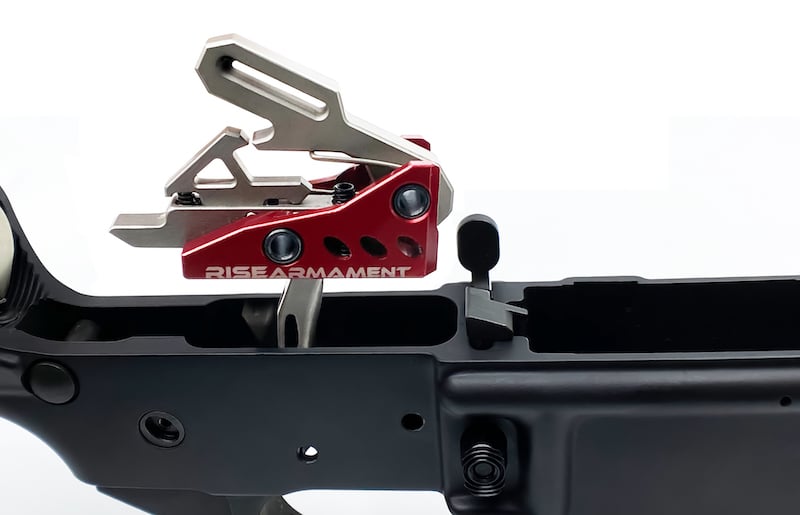
Instead of each component standing on its own, the trigger housing is a metal unit that contains every AR trigger component inside it, and each of these components are held in place through two bushings, sized to allow the trigger pin and hammer pin to slide through. In these self-contained units, the trigger and hammer pins aren’t actually holding the trigger together; the housing and bushings are. Instead, the pins that normally hold a mil-spec trigger in place are used to ensure the housing is located in the right position inside the lower receiver.
This self-contained design is also where the “drop-in” trigger gets its name. Rather than having to wrestle each spring-loaded component into place inside the receiver, the entire trigger unit simply drops into place inside the receiver. Meanwhile, the pins are pushed into place without having to keep tension on a trigger or hammer spring. As a result, they’re often easier and faster to install than non–drop-in units.
Match-Grade Trigger
“Match-grade trigger” is a term some companies use to describe a trigger that is higher performing than a mil-spec one. These may feature finely tuned parts, lighter pull, shorter reset, cleaner break, and so forth. These triggers have some of the most desired features a shooter may want.
Single-Stage AR Triggers
We’ve covered different AR triggers and their builds. However, there are separate types of AR triggers in the drop-in and standard realm. They provide different features, depending on what kind of shooting you’re doing. One of the common triggers found on the market is a single-stage design; this is the type of trigger found in mil-spec AR-15 rifles. With this type of trigger, sear engagement is the obstacle preventing the hammer from heading toward the firing pin. As soon as the trigger-pull starts, the trigger sear is already pushing against the hammer sear on its way to the break.
A good single-stage trigger will have a well-designed and finely finished sear engagement. It should prevent take-up, while providing a crisp snap once the hammer breaks free of the trigger sear. It should also limit overtravel.
Depending on use, trigger pull weight can vary in single-stage designs. AR trigger pull weights are measured in pounds. Mil-spec triggers typically have a pull weight between 5.5 and 8.5 pounds. So, too, can distance be varied in these designs. Mil-spec triggers typically have quite a bit of travel both before and after a trigger break. Meanwhile, competition-style triggers have overall trigger travel measured in fractions of an inch.
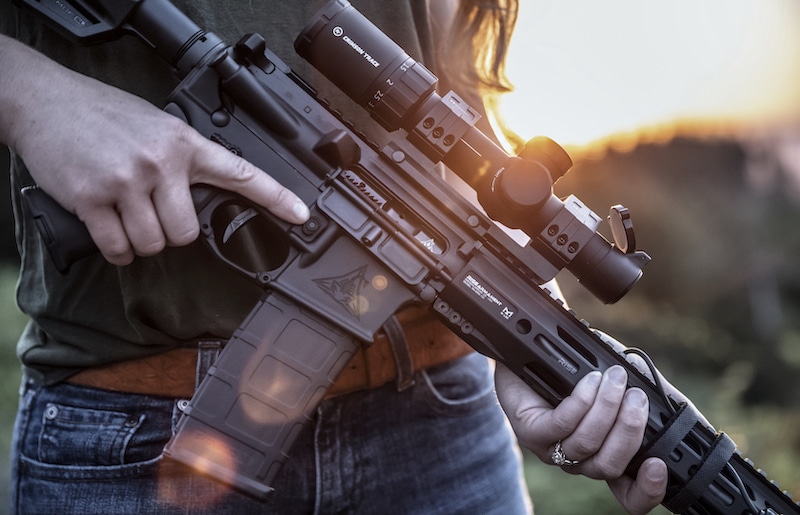
Lightweight, single-stage triggers are the gold standard when it comes to competition and are what many shooters prefer. However, they aren’t necessarily the perfect choice for everyone. Some don’t like that the gun fires so soon after pulling the trigger. However, a long, heavy trigger pull increases the likelihood of the shooter disturbing the rifle and pulling the shot off target before a shot breaks. Therefore, some people prefer two-stage triggers.
Two-Stage AR Triggers
Typically, a two-stage trigger provides a long first stage that allows the shooter to pull rearward until they hit the beginning of the second stage, at which time they can release the trigger or continue to pull to fire the shot.
The benefit of a two-stage design is that it allows shooters to get into position and pre-stage their shots through the first stage. Once shooters hit the end of the first stage and they feel the wall that marks the start of the second stage, it allows them to finalize their shot placement, pause, and break through that wall to fire a shot. The short travel of the second stage helps ensure there’s no shift in a shooter’s grip that could cause them to come off target; this is a reality that isn’t possible with a heavy-pulling version of a single-stage trigger.
From the standpoint of professional applications, that first stage allows shooters to go through a multi-step process before deciding to break a shot. If, for whatever reason, shooters decide to not go through with their shot, slackening their trigger finger brings the pull right back through the first stage.
The primary disadvantage of most two-stage triggers is when rapid follow-up shots are necessary; many two-stage triggers can be inferior in this category. Due to the restrictions on most two-stage triggers’ designs, they can also feel mushy if they have lower pull weights.
Mechanics of a Drop-In AR-15 Trigger
We’ve already covered some of the mechanics when discussing types of AR triggers on the market. But just so we’re on the same page, let’s discuss what happens inside the lower receiver when firing the AR. In a “cocked-and-locked” AR, the hammer holds in its ready position inside the lower receiver by the trigger, which has a machined surface at the front that catches a matching surface near the hammer’s pivot point.
The Firing Process
When on “safe,” the selector switch uses a cylindrical drum running across the rear gap in the lower receiver that prevents the rear of the trigger from traveling upward. A flat cut in this drum allows clearance for the trigger to travel once the shooter moves the selector switch to the “fire” position. At this point, the shooter will provide pressure on the trigger blade inside the trigger guard. This pressure causes the AR trigger to pivot around the trigger pin or bushing. As the rear of the trigger travels upward, the sear surface at the front slides across the engagement surface located on the hammer. This reduces the amount of engagement area that prevents the hammer from pivoting.
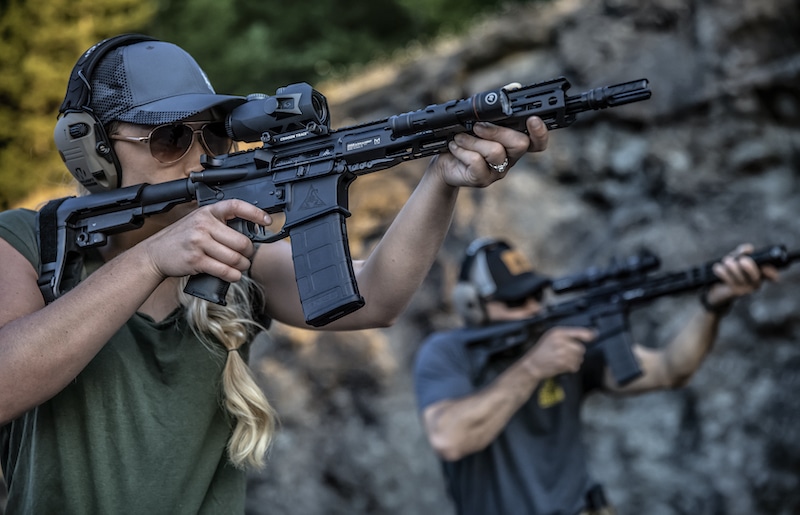
Once the trigger sear clears the hammer sear, the hammer, under spring tension, gets driven upward toward the firing pin. It hits the rear of the pin with enough pressure to detonate a cartridge primer. As the AR–15 bolt cycles rearward to eject a spent cartridge and pick up a new cartridge from the magazine, it also pushes the hammer back down into the lower receiver. The disconnector grabs the hammer and holds it down until the shooter releases pressure on the trigger. Once the shooter releases the trigger, the disconnector allows the hammer to rest on the trigger sear. The shooter again applies pressure to the trigger blade, starting the process all over again.
What Happens to the Trigger Over Time?
Throughout this process, the repeated engagement between the sear surfaces on the trigger and hammer will lead to some self-polishing of the flats over time, causing the trigger to become lighter and cleaner through repeated use. However, the geometry of the sear surfaces ensures there will always be a secure, repeatable engagement between the hammer and trigger. At no point should an aftermarket AR trigger become unsafe to shoot or become more likely to discharge unintentionally.
As an AR trigger can change slightly over time and wear, it’s a logical thought to wonder whether there’s an “expiration date” for your drop-in AR trigger. The short answer is no; your aftermarket AR trigger will last as long as your AR. However, as with every part of a firearm, the performance and longevity of your trigger depends on how well you clean and maintain it.
Maintenance & Cleaning Tips for Your Drop-In AR-15 Trigger
So, is there a certain kind of maintenance for an aftermarket AR-15 trigger? As much as we’d like to tell you that there’s a one-size-fits-all solution, there isn’t. Different companies have different advice for their triggers, so it’s best to check with the specific company.
With that said, there are some best practices that are generally good to follow. Most of those basic measures are just common-sense methods. Most ARs on the market operate using a direct-impingement system, which causes gas and fouling to travel back into the receiver. With that in mind, it’s important to remove this carbon and fouling buildup at least every 500 rounds.
As with all parts of your gun, it’s important to inspect and clean your drop-in trigger when you do your 500-round cleaning and inspection. If there is carbon or other debris in the trigger, you can generally clear it with some condensed air. Next, follow it up with some oil or grease on the sear-engagement surfaces. Not only will this protect the metal, it’ll also facilitate a smooth, clean trigger pull.
Finally, you might have some setscrews inside your trigger housing that push the trigger housing against the bottom of the receiver and exert pressure against the trigger and hammer pins. You might also have some anti-rotation or anti-walk trigger pins secured into place with small screws. Now’s a good time to snug those up and make sure they aren’t vibrating loose. Be sure they’re snug, but don’t overtighten the setscrews.
Advantages of a Drop-In AR-15 Trigger
All this talk about trigger types, mechanics, cleaning … is it really worth it? What are you going to get out of an aftermarket trigger anyway? Quite a lot, actually. See, the beauty of aftermarket AR triggers is the insane number of choices out there. Each one is tailored to a particular use or even a person’s budget. With the sheer range of triggers available today, there’s not much reason to stick with a mil-spec.
An aftermarket trigger provides a cleaner, smoother trigger pull. That pull aids in accuracy and repeatability, allowing AR owners to get the most out of their rifles. Even a basic, budget AR can see notable increases in downrange performance through a simple trigger swap. Why? The consistency provided in a purpose-built AR trigger allows shooters of every experience level to focus on the other variables involved in making a perfect shot. Take a gritty, inconsistent trigger out of the equation and focus on the other essentials of marksmanship — like sight picture, breath control, and follow-through.
Aftermarket AR triggers also allow users to hone their rifles for specific tasks. We’ve discussed some of the different trigger types available today. Within each of those types are countless different variations. Some triggers work for competition, others for hunting, and still more for home-defense or professional use. Every trigger option brings new capabilities to the table and allows shooters to excel at whatever niche they choose to explore, rather than having to wrestle with a general-purpose, mil-spec trigger that doesn’t really offer any particular benefit.
What Kind of Aftermarket Trigger Should I Buy?
There are a couple of ways to go about choosing an aftermarket AR trigger. It depends on your starting point. For owners of budget, mil-spec AR-15s looking to upgrade, it’s important to know exactly what it is about the mil-spec trigger you don’t like, as well as what you’re trying to do. Is it gritty? Does it travel too far for your preferences? Are you trying to get more-accurate groups? Shoot faster? Depending on the answer to these questions and more, your choice of aftermarket trigger will change. Finding the right trigger depends on knowing what you like and don’t like in an AR trigger. For that, there’s a great way to find that out: go shoot!
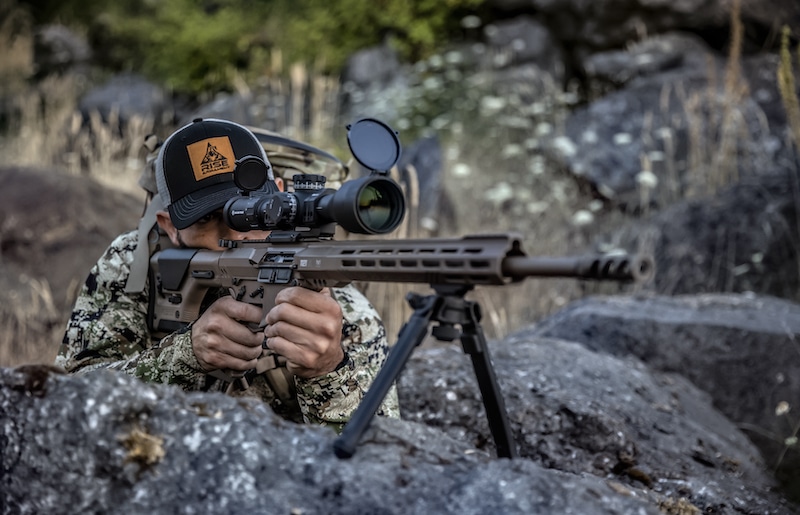
The other potential option is if you’re building an AR from a stripped receiver. There, you need to decide what kind of trigger to put in your AR-15. Obviously, you can’t shoot it because there’s no trigger! Well, it still depends on what you’re planning to use the gun for. There are different schools of thought on what triggers work best for which disciplines.
Long Range
For a long-range gun or a hunting rig, many believe having a two-stage trigger that provides take-up for a decision-making phase can be helpful. However, military sniper systems come standard with single-stage triggers, so that’s debatable.
Competition
For a fast-paced, action-style competition, having a light, single-stage trigger with a fast reset can help shooters breeze through stages with reduced split times and faster follow-up shots.
Home Defense
For home-defense use, going with a slightly heavier, combat-style trigger might be a safer bet. However, there are many who argue that a lighter trigger is safer for home defense since it typically leads to more accurate shot placement. One consideration (and it’s a big one): You, as the shooter, are responsible for the terminal resting place of every single bullet that exits the muzzle of your gun. The trigger is what initiates that exit. So you want to pick a trigger that maximizes the likelihood of every round going exactly where you want, when you want.
Of course, choosing the “best” AR-15 trigger is an entirely subjective task. Every shooter has different preferences and different thoughts on what’s best for different shooting scenarios. For a first-time AR owner, it’s not a bad idea to work with a mil-spec trigger. Firstly, find its pros and cons. Then, find an AR trigger that addresses those elements of a mil-spec design that are the most bothersome and work with that option. It might take a few tries to settle on a trigger you like best. But remember, there are plenty of reasonably priced, aftermarket triggers on the shelf that offer enough room for any budget to try out a few.
Picking an AR-15 Rifle Trigger
It’s no surprise the trigger is one of the most important upgrades an AR-15 owner can make to a rifle. On today’s market, there are plenty of trigger options, but it all depends on what you’re comfortable with.
The word shooters around the world associate with RISE Armament is “trigger;” when you see our options, you’ll know why. We offer a number of top-rated aftermarket drop-in trigger options for your AR-10, AR-15, or PCC. Used by competition shooters, law enforcement, and more, RISE’s triggers are the most trusted options in the industry. Our builds prove themselves with each pull.
Our RA-535 APT — the Ferrari of triggers — is the one that started it all. Since then, we’ve added several new triggers to our lineup. The Rave 140 is available with either a curved trigger blade or a flat trigger blade, depending on your preference. Then there’s our top-of-the-line, super fast Blitz trigger, which comes in at less than $200. There are plenty of other options as well. So find a drop-in trigger that works best for your AR. Once you have, head over to our “how to install a trigger” tutorial page. After that, you’ll be all set to start shooting with your new RISE trigger.

